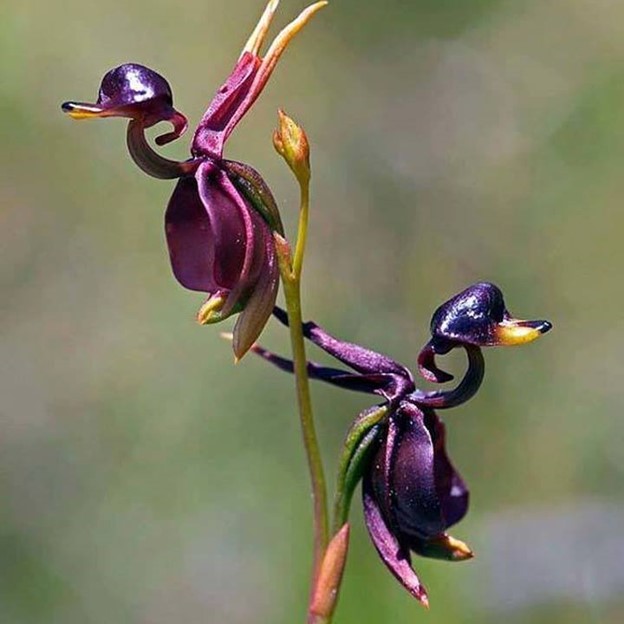
It looks like a pair of haas are flying. Actually it is a special type of orchid flower. Found in forests of southeastern Australia. The head, lips and upraised wings of this tiny orchid look like a flying smile. So they are named flying duck orchid (flying duck orchid). Its scientific name: Caleana major. Attempts have been made to grow this flying duck orchid in different parts of the world, but they do not live anywhere else except this special forest in Australia. Nature has adopted a strange strategy to save the life of this orchid, in this particular forest.
A fungus is intimately attached to their roots all the time. They have a symbiotic relationship with fungi. Which means mutually beneficial. Both fungi and orchids benefit from both. This fungus is found only in the forests of southeastern Australia. The fungus protects the orchid from various infections. That is why this plant cannot survive long without the fungus.
Although the flower of this flying duck orchid is not the smallest flower in the world, it is still quite small in size. The height of the tree is about 50 cm. With their red and purple colors, they blend in with other forest plants in such a way that they are not easily spotted.
Flying duck orchid has a special organ called labellum. The labellum gives this orchid a smiley face. It is also called a life saving organ. This organ plays a major role in the survival of this species. This labellum attracts pollinating insects and acts as a landing platform for the insects. Especially for sawflies. They are usually pollinated by male saw-flies. Saw-fly is a type of pollinating insect. They have this name because they have saw-like egg-laying tubes. With this saw-tube they cut the plant tissue before laying eggs. Their larvae look a lot like caterpillars. These insects are often very damaging to plants. The fungus attached to the roots acts as a life preserver, primarily to protect the flying duck orchid from infection.
Saw-flies do not normally find pollinators by biting pollinating insects. When the saw-fly sits on the column of the flying duck orchid, the weight of the insect causes the labellum to spring down on the column. The insect is then trapped there and the only way they can get back out is through the pollen grains. After pollination they can leave there. After pollination, the labellum returns to its original position. This special survival strategy of flying duck orchid in nature shows how smart “nature” itself is playing to protect her creation.
Toronto, Canada
